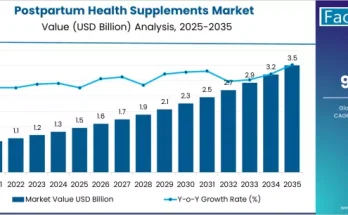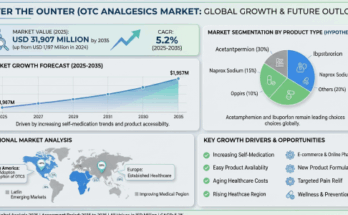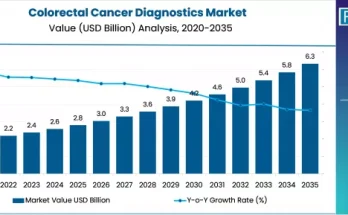According to a recent Fact.MR report, the global endoscopy ultrasound market is forecast to reach US$ 1.85 Billion by the end of the 2022-2032 forecast period, registering a CAGR of 5.7%. By 2022, the market is poised to reach a valuation of US$ 1.06 Billion. The scope of the worldwide endoscopy ultrasound market has expanded, mostly due to an increase in the global incidence of gastrointestinal malignancies.
From 2015 to 2021, sales of endoscopy ultrasound products has risen significantly, documenting a CAGR of 4.8% to be valued at US$ 997 Million. The World Health Organization (WHO) estimates that stomach malignancies account for more than 700,000 cancer-related deaths. As a result, the use of endoscopy ultrasound techniques has grown in importance.
As a result of the COVID-19 pandemic, healthcare personnel postponed elective endoscopic ultrasonography treatments in order to limit transmission from infected patients to healthcare staff. This limited growth prospects to a minor extent. Endoscopy ultrasound methods are less expensive than procedures like Endoscopic Retrograde Cholangiopancreatography (ERCP), which will drive market expansion.
Key Takeaways from the Market Study
- By product, needles category is projected to expand 1.5x, accounting for over a fifth of the market
- In terms of procedure, the upper endoscopy ultrasound segment is expected to account for more than 70% demand
- During the projected period, the linear scanning sector is expected to grow at a CAGR of 5.8%.
- North America will lead the worldwide endoscopy ultrasound market, rising at a CAGR of 5.8%.
- The market in Asia-Pacific is expected to grow almost 2.0x, accounting for around one-fifth of the worldwide endoscopy ultrasound market.
- Companies like Olympus Corporation have encouraged workers to work from home while restricting overseas travel for all employees.
“The global endoscopy ultrasound market is expanding at a rapid pace.” The increasing frequency of gastrointestinal and pancreatic malignancies is expected to fuel market expansion. As a result, key market players are focusing on technical innovations in order to produce higher-quality goods and solutions,” says a Fact.MR Analyst.
Competitive Landscape
Three major companies lead the worldwide endoscopy ultrasound market: Olympus Corporation, PENTAX Medical (HOYA Corporation), and FUJIFILM Corporation. These businesses are continually improving their technology in order to deliver superior solutions to their customers. These companies are pursuing organic and inorganic growth strategies in order to broaden their product offerings, extend their geographical reach, and increase their market share in the worldwide endoscopy ultrasound market.
- In April, 2021 – Olympus announced today the addition of the 510(k)-cleared H-SteriScopeTM Single-Use Bronchoscopes, a range of five premium endoscopes for use in advanced diagnostic and therapeutic procedures, to its U.S. bronchoscopy portfolio.
Request Sample Report
More Valuable Insights Available
Fact.MR, in its new offering, presents an unbiased analysis of the endoscopy ultrasound, presenting historical demand data (2015-2021) and forecast statistics from 2022 to 2032.
The study divulges essential insights into the market based on product (endoscope, ultrasound probe, ultrasonic processor, imaging systems, needles and accessories), procedure (upper EUS, lower EUS, EUS guided fine-needle aspiration and others), technology (radial scanning and linear scanning), application (oncology, upper GI oncology, lower GI oncology, pancreatic conditions and others), and end user (hospitals, specialty clinics, ambulatory surgery centers and diagnostic centers) across five major regions (North America, Latin America, Europe, Asia Pacific, Latin America and Middle East & Africa).
Fact.MR’s Domain Knowledge in Healthcare
Our healthcare consulting team guides organizations at each step of their business strategy by helping you understand how the latest influencers account for operational and strategic transformation in the healthcare sector. Our expertise in recognizing the challenges and trends impacting the global healthcare industry provides indispensable insights and support – encasing a strategic perspective that helps you identify critical issues and devise appropriate solutions.



